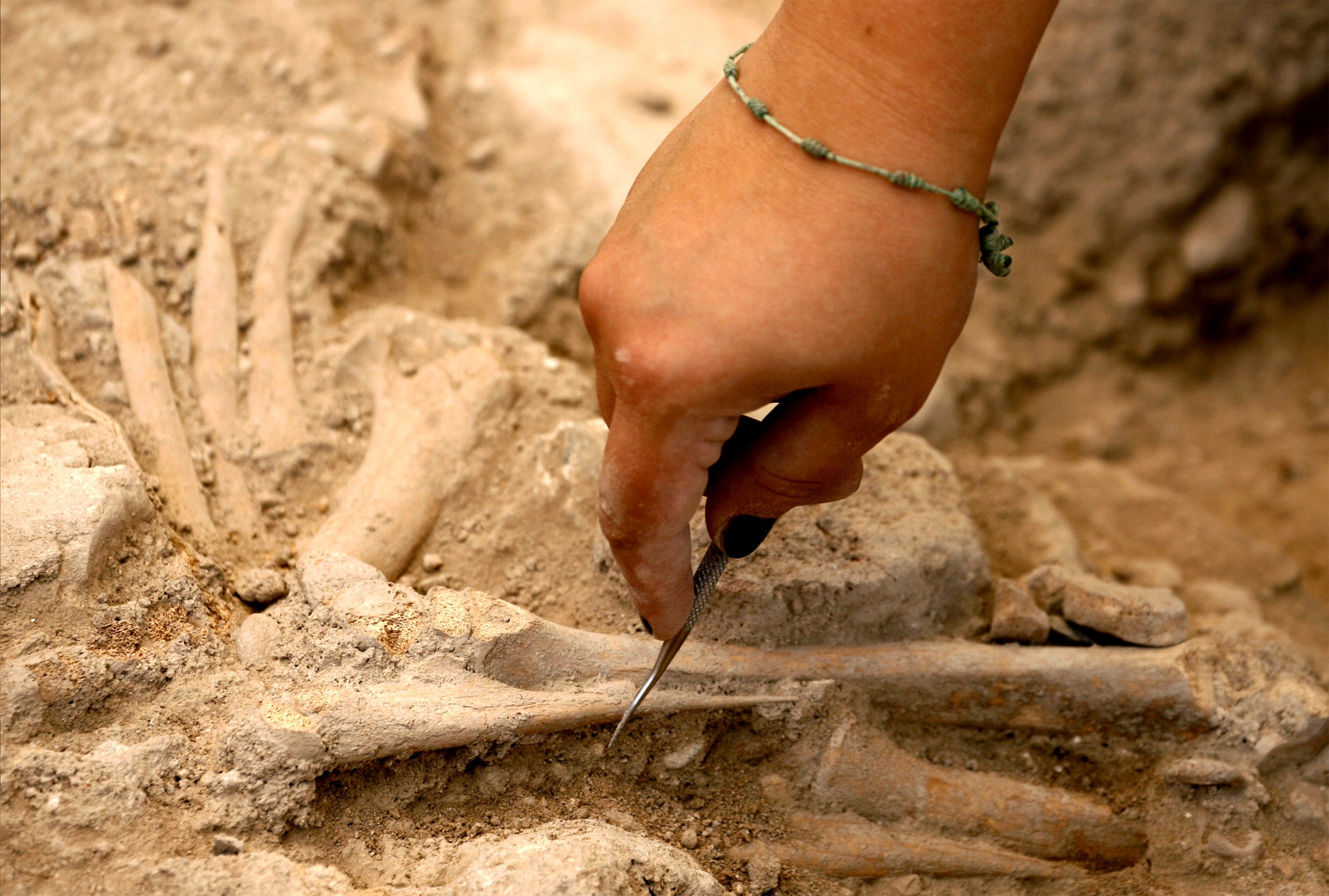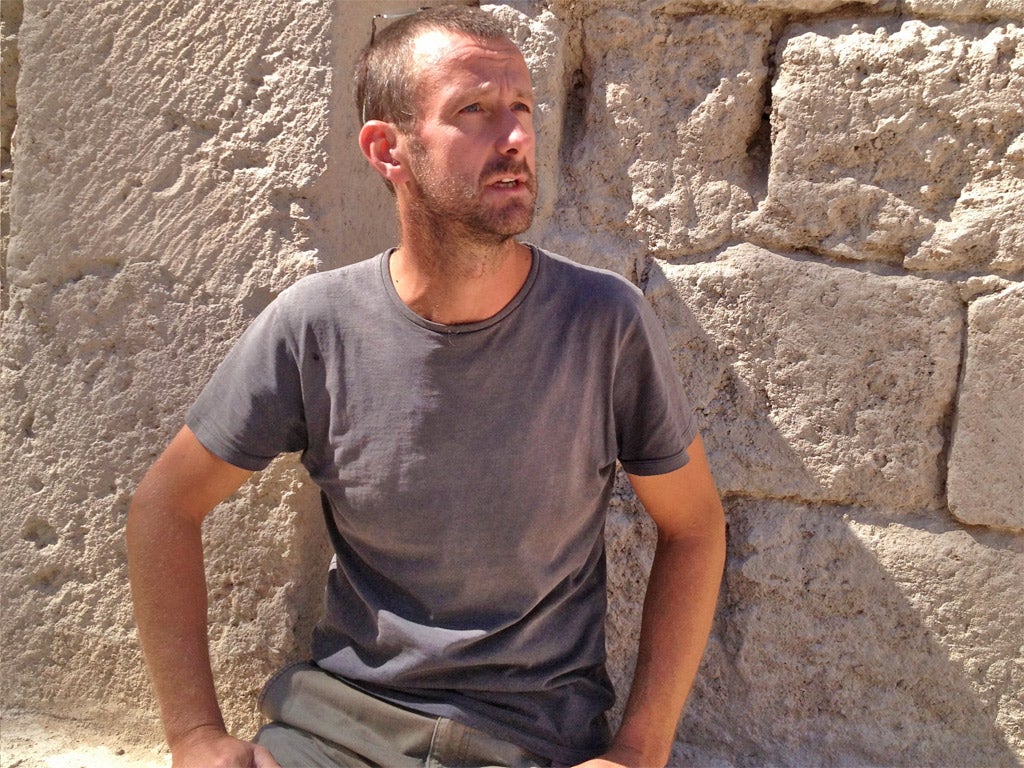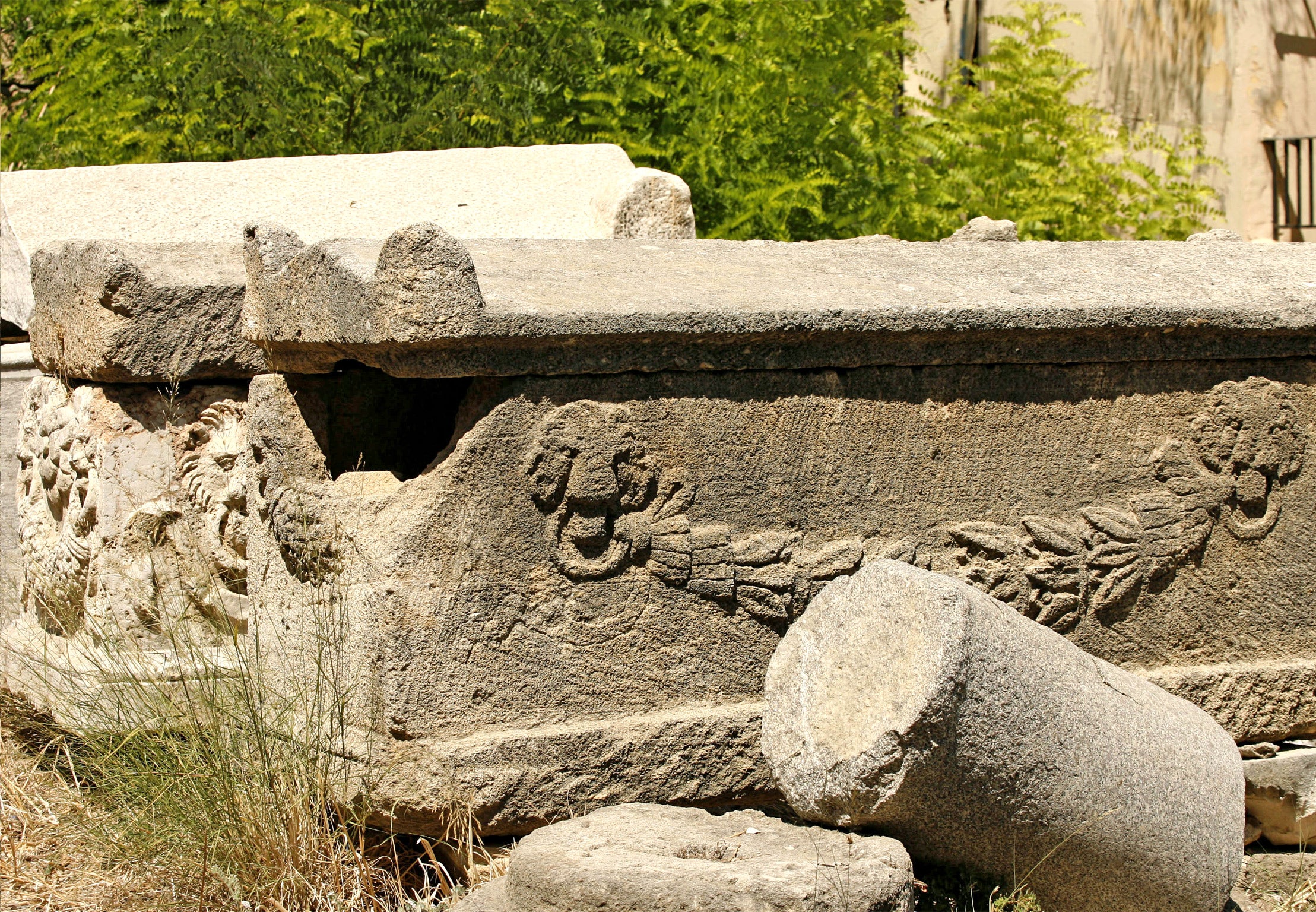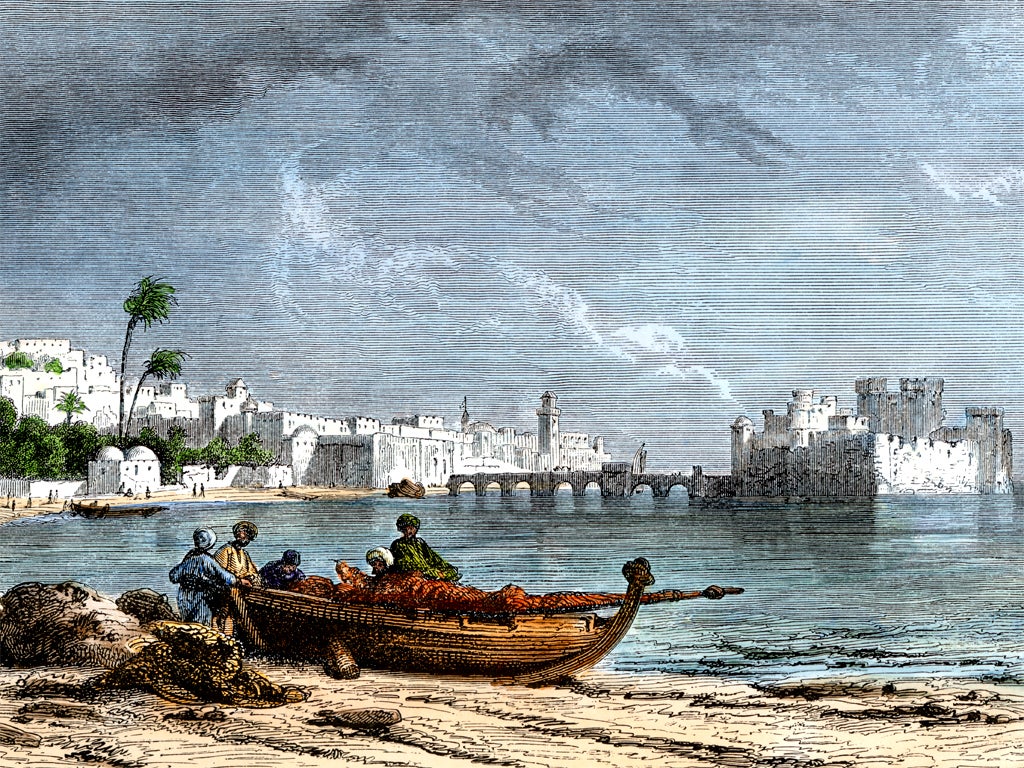Ancient Sidon: Sifting through the city's deadly history
Among its ruins, Robert Fisk joins an archaeological dig that could transform our understanding of Lebanon’s bloody past
Your support helps us to tell the story
From reproductive rights to climate change to Big Tech, The Independent is on the ground when the story is developing. Whether it's investigating the financials of Elon Musk's pro-Trump PAC or producing our latest documentary, 'The A Word', which shines a light on the American women fighting for reproductive rights, we know how important it is to parse out the facts from the messaging.
At such a critical moment in US history, we need reporters on the ground. Your donation allows us to keep sending journalists to speak to both sides of the story.
The Independent is trusted by Americans across the entire political spectrum. And unlike many other quality news outlets, we choose not to lock Americans out of our reporting and analysis with paywalls. We believe quality journalism should be available to everyone, paid for by those who can afford it.
Your support makes all the difference.Across the ruins of ancient Sidon, Matt Williams darts like one of the stick-like figures on the Mycenaean pottery he and his Lebanese and British colleagues have discovered. He bounds across bedrock, clambers along the medieval wall of Sidon, his hands gesticulating at still-damp wells and Roman columns inserted into Crusader walls. “This is the most exciting excavation I’ve ever worked on in my career,” he says. “And it will have been the best excavation I will ever work on in the future.”
Click VIEW GALLERY to see more images from the excavation
If dog owners look like their pets, Matt Williams can look slightly like the warriors he has helped unearth, or perhaps the 500 BC shard of Hermes receiving a “supplicant”. Hermes was a messenger of the gods and the god of roads and commerce – of which there are plenty in Sidon – as well as cunning and theft, of which the freelance British archaeologist from Cambridge is innocent. With his Lebanese companion Enas Saleh, who has spent 15 years on this wonderful site in the very centre of old Sidon, Matt Williams has spent a mere six years digging through the cult life and feast days and violence of the peoples who live in what is still, from time to time, a dangerous city.
Since the Lebanese department of antiquities owns this bit of history – it originally lay under a Christian school demolished more than a century ago – there are no legal problems, no property claims, no developers hustling for an early end to archaeological discoveries. Thus, and this is the reason for Williams’ excitement, the diggers and trowels and cleaners and historians can work their way from the oldest levels of Sidon – Chalcolithic, early, middle and later Bronze Ages and the Iron Age up to the Persians, the Romans, with their pavements and drains and walls, and the rampart foundations of the medieval Crusaders. It’s all there.
And lest you think this is academic waffle, just listen to Matt Williams when he describes the Crusaders’ human remains, buried hastily in a mass grave beneath the medieval walls sometime around 1250. Some of the Crusaders had been beheaded. “There was some kind of attack and they probably died fighting,” he says. “There were chop marks and blade marks on the bones and they were plopped into small graves, 15 of them, in a shallow ditch at the bottom of the 13th-century walls.” Of their deaths in battle, we know no more.
Sidon was then part of the theoretical “Kingdom of Jerusalem”, and the Castle of the Sea – now one of the city’s greatest attractions for the tourists who today rarely dare to come here – was only built in the late 1220s. Saladin was long dead and the Knights Templar were still clinging onto the Lebanese coast in 1280, their seafront fortresses placed a day’s sailing apart, since the hinterland was now in “enemy” hands. These Crusader castles were the ancient equivalent of Donald Rumsfeld’s notorious “lily-pads”, walled military bases to protect the forces of Western “civilisation” against the armies of barbarians (terrorists) outside.

The reality of such dark history is illustrated in the magnificent little exhibition beside the site. The British Museum’s photograph of the Crusader remains is ominous and dark brown – half of the bones are now at Bradford University which has a centre for ancient pathology, the rest packed in boxes above the site – but also on display is a copy of an early 14th-century drawing of Saint Louis (the original is at the Metropolitan Museum of New York) burying the bones of Crusaders in Sidon. While the goodly and crowned saint is reverentially piling skulls in a sack, the stench is so awful that three of his assistants are covering their mouths with their hands and a cloth.
In any event, the Mamluks gobbled up Sidon in 1291, the Templars finally abandoning their sea castle on 14 July, and by the time Ibn Batutah arrived around 60 years later, Sidon was smothered in fruit trees, exporting figs, raisins and olive oil to Egypt. But this is, in a sense, “our” Western history. Sidon’s real past began two millennia earlier and spread through both legend and literature. This was the birthplace of Dido of Carthage, which supplied cedar wood for the temple of Jerusalem, and which Homer describes in the Iliad as the city whence Peleus sought his prize for a foot race, a silver bowl: “for its loveliness it surpassed all others on earth by far, since skilled Sidonians had wrought it well and Phoenicians carried it over the misty face of the water…”

The Sidon site has produced treasures to match this. There are cylindrical pots from the early 5th century BC showing warriors rising prancing horses and holding spears, deity figurines from the early Bronze Age – a mixture of naïve and surreal if we were to apply today’s artistic taste – and there are axe heads from graves, and one mud-bricked sepulchre from the middle Bronze Age whose occupant had to be squashed into it, the skeleton’s knees almost forced into its stomach cavity.
Enas Saleh describes how the children from modern Sidon look at the pictures of these bones. “Mostly, they want to know the names of these people,” she laughs. But of course, the children are right to ask this question. Even the ancient dead deserve their human identity and even I, inured to the modern and blasted corpses I have seen in Sidon’s present-day mortuaries, wonder if these long dead folk really deserve to be boxed up and carted off to Bradford University. As for the identities, alas, you had to be rich or priestly or kingly to have your name recorded 3,000 years ago.
There is, for example, an early Iron Age Phoenician plate discovered on site, recording that Abdyahu was a priest responsible for several altars. They’ve even discovered a percussion instrument, a “sistrus” used for religious dances to worship the Egyptian goddess Hathor. A set of earphones at the exhibition helpfully gives visitors the sound of its music, the tinkling, it seems, of tiny bits of metal. And intriguingly, the instrument owes its name to the rustling of a cow passing through a thicket of papyrus reeds.

The archaeologists have found gold pendants, earrings, silver bracelets and, perhaps most enthralling, a tiny cylindrical seal depicting an apparently Mesopotamian worshipper with a gift, a seated goddess and a bearded hero wearing the headdress of a bull-man, with water pumping out of his left elbow. The hole through the cylinder must have been drilled, but its makers surely needed glass or primitive spectacles to indent this extraordinary detail onto a soapstone seal scarcely an inch in length.
Animal remains prove that ancient Sidonians hunted and ate hippopotamus, bears, boars and deer. They were fixated, like so many peoples of antiquity, with gods, masculinity, sex and death – their present-day descendants might be guilty of just such obsessions – although life can be easier now. For a fine falafel sandwich, you have only to walk half a mile down to Palestinian Abu Sami’s shop opposite the Castle of the Sea. But there are some eerie parallels. Just opposite the excavation site is one of Sidon’s contemporary cemeteries. The grandfather and grandmother of a friend of mine are buried there and here too are buried five murdered men (I spent six weeks investigating their deaths), beaten to death by Israeli guards at a makeshift prison camp in a Sidon fruit factory in 1982.

And the tide of peoples who have washed through this old city continues. Most of the inhabitants living around the dig where Matt Williams and his colleagues work are Palestinian refugees, Iraqi refugees and now, thousands of refugees from the bloodbath in Syria. For despite their beautiful artefacts, the grace of their art and their ancient scripts, the one thread that binds the peoples of antiquity to the humans who live here now, is war.
Join our commenting forum
Join thought-provoking conversations, follow other Independent readers and see their replies
Comments